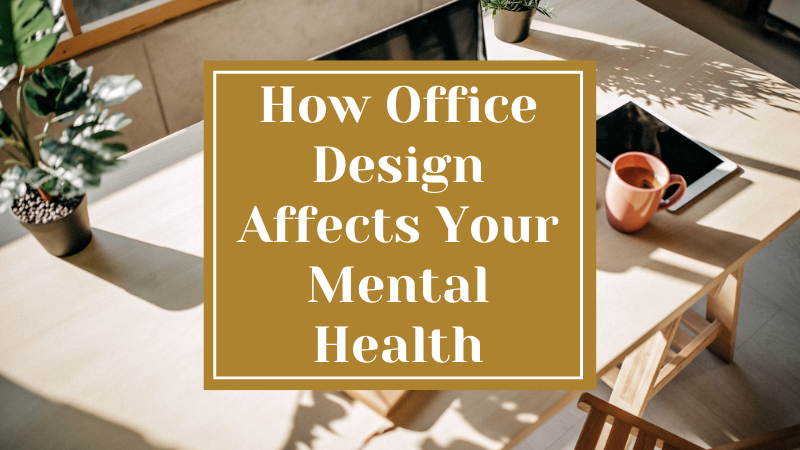If you go home after 10-14 consecutive hours of work spent in your office and you don’t feel somehow mentally drained, well, most likely there is something wrong with you.
Research and studies from all over the globe provide extensive evidence of how much our personal lives and specifically our mental and physical health are heavily affected by too much work in unhealthy or wrongly designed environments. If we agree upon the fact the environment in which we work has a massive impact on our well-being (and happiness), what are then the factors we should pay attention to in our offices?
Here is a short list of some of the things you might want to keep in check, no matter if you work in an old office or you just moved into a brand new compound with super expensive carpet tiles and sliding glass doors. Mental and physical health are non-negotiable parts of a job, any job, and regardless of your role within the company, you should highly regard all these aspects of your workplace.
1. Sound
Have you ever tried to close your eyes and focus on the noise in your office? Make a list of all the sounds you can hear and try to distinguish them from each other. Speech, telephones, machines and people just moving around can constantly get your attention away from whichever task you’re focused on. We all know how long it takes to get “in the zone” every time we have to re-focus on something, how many times per day can you afford to get distracted before time is running out?
Noise is the cause of stress and cognitive fatigue, day in and day out. Especially in open offices, it is rather important to introduce some barriers or partitions to channel or even stop the noise. Or else, you’ll have to introduce policies in your office where everyone must observe a strict silence during working hours.
2. Air Quality
Have you ever turned on the a/c in your office to discover a very poor and rather disturbing smell? Have you ever thought about the quality of air in your office? Heating, ventilation, and air conditioning have a great impact on your lungs and if overlooked, these things can slowly cause illnesses among the employees, specifically to the respiratory system. Especially in rooms with many machines or people, high ceilings and up-to-code HVAC are necessary to facilitate ventilation. Also, an air purifier could help to keep things on track.
3. Lighting
I can’t stress enough how the lighting quality can impact the performance and well-being of employees. Every person in the office should test the presence of glare whenever they are working, and make sure they have the right amount of light in their workplace. Access to natural light is also very important – think about the seasonal affective disorder (SAD), caused by reduced hours of sunlight – and will immensely benefit the mental health in the office.
In case you have the opposite problem – an office with many windows – it’s not too difficult to dim or filter the light coming inside during the day, but first make sure you understand the orientation of the building, your designer or architect should be already aware of this.
4. Personal Space
An office full of people, machines, wires, furniture, and stacks of paper with very little personal space is not going to be a place where anyone is happy to return or to go in the first place.
What is the density of your office? Where is the densest area in your office? How much space every employee has to effectively do their jobs? Have you ever considered the importance of personal space related to mental health?
Regulations state that every employee should have a minimum of 11 cubic meters per person, which of course should be well designed by using the right layout and materials. But that’s not enough.
Cubicles have dominated our offices for decades, even when people clearly stated how much they hate them, they’re still a design icon, so to speak. The cubicles are designed around the question “What is the minimum personal space we should provide?”
Decades passed and we’re still asking this question. A desk, a laptop, some leg space, the correct office chair, and a bit of lateral space to breathe seem to be all we need. Our desk is our little island, yet, people suffer from stress and fatigue in any office. Something is wrong.
If you want to address one point to improve your employee’s working hours, sit at their desks and ask yourself how you feel – try to imagine how it feels to be there for 10+ hours, 5 or more days a week, years on end.
How does it feel? Addressing this question, and implementing the aforementioned points will have a huge impact on people’s mental health and, if anything, make your office a happier place.
Looking for more great reads? Check out these related articles:
- 31 Days of Home Office Organizing Tips
- 4 Tips for Moving Your Home Office
- How to Work in a Shared Home Office
- 7 Design Tips to Beautify & Personalize Your Home Office
- 7 Tips for Office Design That Will Leave an Impression
- How to Improve Your Office Space
- Can Brilliant Work-Friendly Spaces Emerge from a Spare Corner of Your Home?
- Which Type of Flooring is Best for Your Home Office?
- Curtains or Blinds: Which Is Best Suited for Your Home Office?



